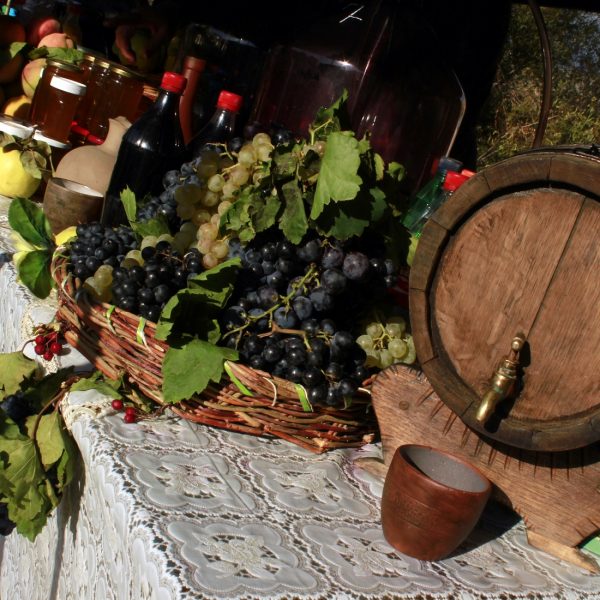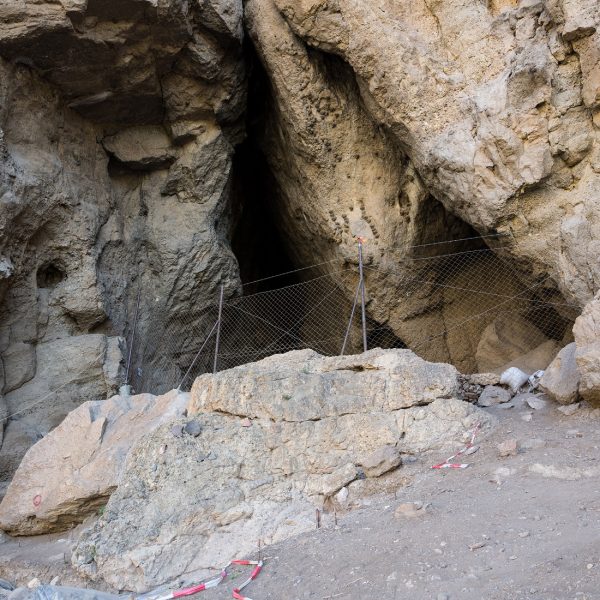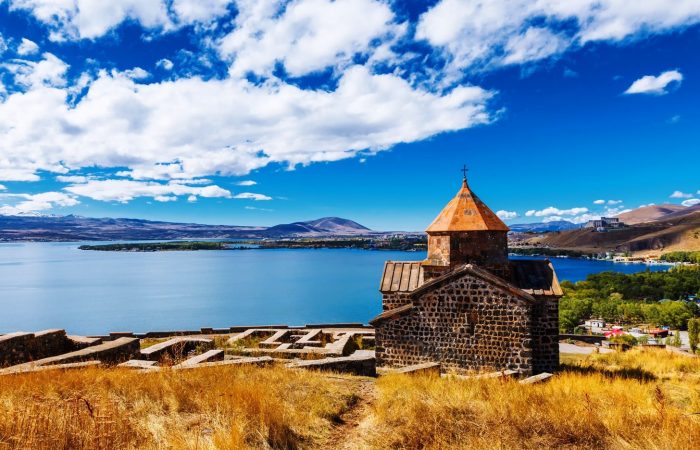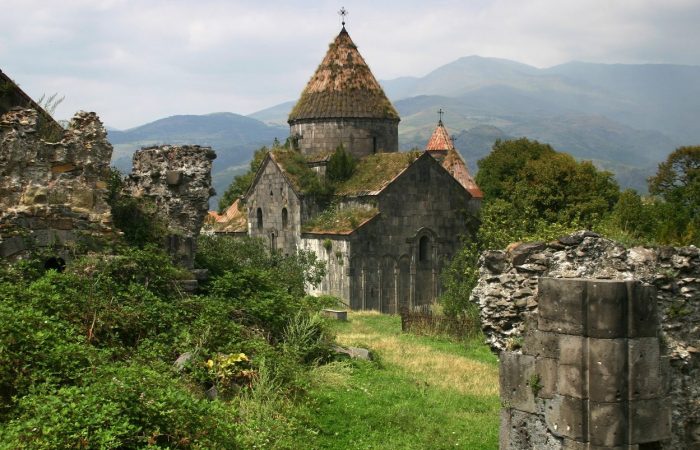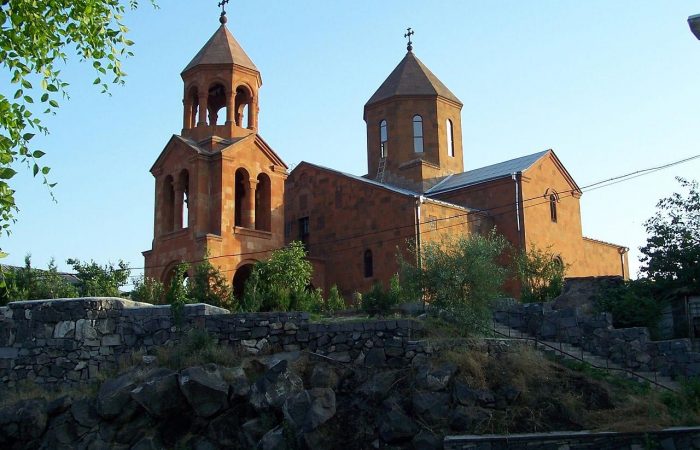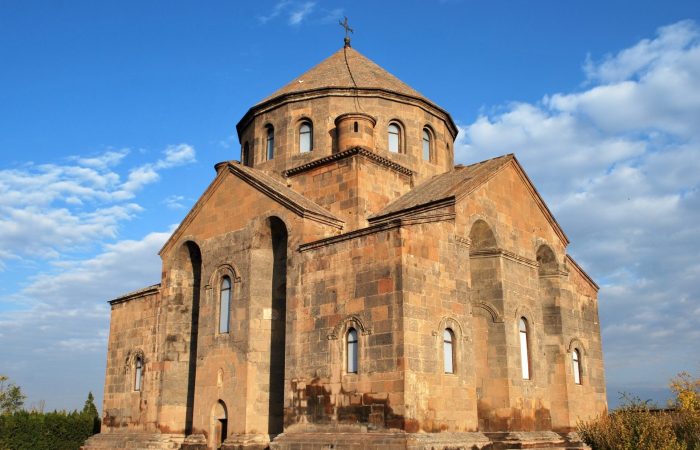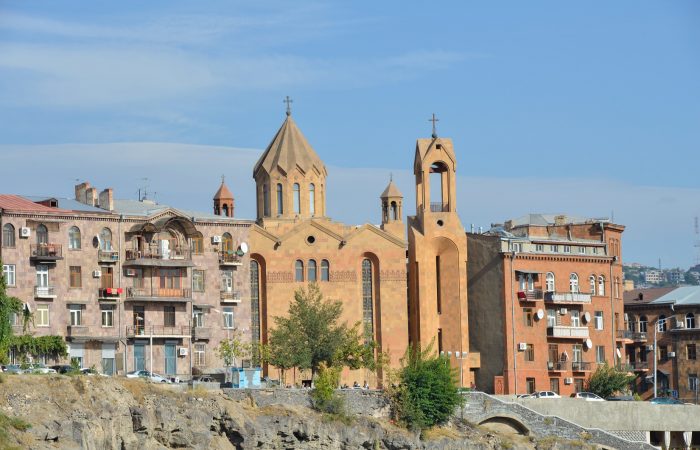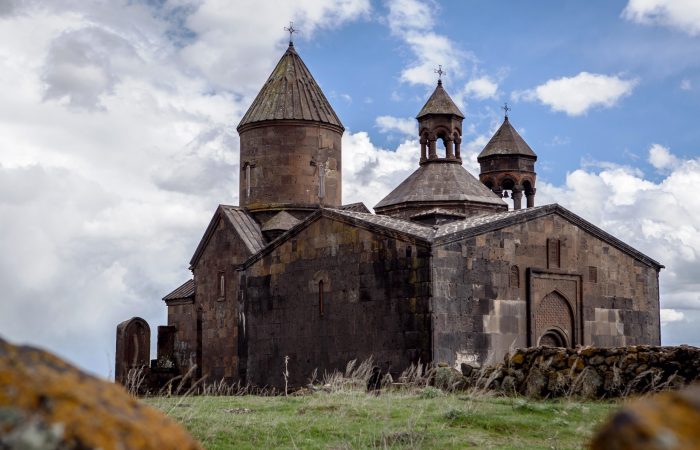Areni Village: General
As already said, Areni Village is located on the bank of Arpa River at the point it starts to descend to the region of Nakhijevan plain. Excavations have brought forth a number of items, which label Areni as one of the oldest settled territories.
In 114 Areni appeared under the rule of Roman Emperor Trajan who conquered Armenian Kingdom and made Armenian kings pay taxes to him. The Roman control continued until 253. It’s when the Romans were defeated in the battle at the Syrian city of Barbalisos.
Areni Village: Wine Growing
According to Roman historians, Armenian wine was being exported to almost all the countries of the world. In their turn, Urartian inscriptions state about the high level of Armenian wine growing back in the 8th century BC. In his world-known work “Anabasis” Greek writer Xenophon (430-354 BC) noted about Armenian wine saying, “Inside there were stores of wheat and barley and vegetables, while in the large magnificent bowls wine was being made. The beverage was being made without water and was therefore very strong and a delicious flavor to certain palates though one should yet get used to the taste.”
In the Middle Ages Armenian wine had reached Europe. A document was found with the note about Lithuanian agents having bought Armenian wine for the court of Vilnius.
Areni wine production stopped in the 17th century. In 1604 local population was forced to exile to Ispahan. The grape fields were left with no care and attention. However, the most resistant and strongest trees survived until the 19th century. It’s when the cultivation was resumed.
Areni Village: Saint Astvatsatsin Church
The Church of Saint Astvatsatsin (Holy Mother) was built in 1321 by Archbishop Hovhannes Orbelyan. The church’s architect was miniaturist and sculptor Momik. The domed church is one of the most outstanding works of the artist. The bas-relief found on the tympanum of the western entrance is one of the best creations of Momik. It depicts Holy Mother with Jesus Christ on her knees.
Tombstones and khatchkars (cross-stones) dating to various periods were found in the territory of the church-yard. The small-size but intricately carved khatchkars were made simultaneously with the church, while the comparatively simpler and roughly made ones date to earlier periods.
Areni Village: Medieval Ruins
Medieval Areni was a large property belonging to the Princely Family of Orbelyans. In the 14th century there was Prince Tarsayich Orbelyan’s palace. The ruins of this palace can be found close to the church.
Areni Village: Bridge
The ruins of a bridge dating to the 13th century have been preserved at the old course of Arpa River. The bridge was built by Bishop Sargis, the leader of Noravank Monastery.
Areni Village: Chapels
There are several medieval chapels scattered all around the village of Areni. Some of them can be found in the yards of houses, while the rest in the vicinity. Among them are the cave-chapel of Saint Sargis and the chapel of Saint Grigor Nahatak (Martyr).
Areni Village: Hrashkaberd (Wonder Fortress)
Hrashkaberd (Wonder Fortress) is a ruined medieval fortress. Notes about the fortress were made in Stepanos Orbelyan’s work “The History of Sisakan State,” which was written in probably 1299. It describes the consequences Mongol invasions resulted in on the properties Orbelyans held in Syunik.
Areni Village: Excavations
Proper and detailed excavations in the territory of Areni were conducted only in the recent years, and they have revealed rather interesting things about the area. Among the findings are a portable altar, 5550-year-old shoe,
Portable Altar
The portable altar dates to 163 and belongs to the pagan era. The inscription is made in Greek. The inscription states there once used to be a temple dedicated to the Goddess of Olympus. The temple is believed to be built by Amelius Ovalis, a soldier of the 15th Roman legion. The legion was also known as “Apolinaris,” in honor to God Apollo.
5500-Year-Old Shoe
The 5500-year-old shoe was found only in 2008 in Areni in a cave more known as Areni-1 cave complex. The shoe was discovered by Diana Zardaryan, an Armenian post-graduate student who together with a team comprised of archaeologists from Armenia, Ireland and US was conducting excavations in the area.
The shoe was found in near to perfect condition, although considering for how many years it remained there it can be quietly said that the shoe was found in an excellent state. In all likelihood, it was due to the cold and dry cave conditions. The thick layer of sheep dung obviously played some significant role in the preservation as well.
The shoe contained grass, and two assumptions were made in regard to that. According to the first one, the grass was used to keep the foot warm, while according to the second one, it was used to retain the shoe shape whenever it was not worn. The shoe is small in size, and it can’t be said if the shoe belonged to a woman or a man, because considering the age it was made it could equally fit well both genders. Interestingly, the shoe had laces, and they are preserved as well.
The analysis made in Oxford and California showed the shoe dates to 3500 BC, which means the shoe is for two hundred years older than the leather shoe found on Otzi the Iceman (the natural mummy of a man who lived in 3300 BC; it was found on the border between Austria and Italy), for four hundred years older than the one found at Stonehenge, and for thousand years older than the ones found at Great Pyramid of Giza.
Areni Winery
Areni Winery was found during excavations that started in 2007 and continued until 2010. The winery of Areni village is believed to be for thousand years older than the one found in 1963 in the West Bank. The winery includes fermentation vats (containers), wine press, storage jars and pottery sherds.
The winery was discovered by a team of archaeologists from Armenia, US and Ireland. Other than that, grape seeds, remains of pressed grapes and dried vines were also found. The seeds were from the same type of grape, which is until today used to make wine. It’s the Vitis vinifera with which humans have been acquainted since the Neolithic period.
The winery was surrounded by graves and based on the drinking cups found around there it was concluded that the site was intended for ceremonial use as well.
Areni Village: Wine Festival
Areni Wine Festival is a relatively new festival, which has already brought together many wine-lovers and wine-makers from both Armenia and around the world. It has been celebrated since 2010, and offers a great opportunity to discover Armenia, its culture and traditions, be present at wine-making process as well as try various delicious Armenian wines the fame of which has long been spread throughout the world and which have been inseparable of the dinners served in the royal courts.
To sum up, Areni village is where people have been living thousands of years ago and where they have left many things speaking of their culture and way of living, and though excavations are currently not being held at the site you never know what new findings you might encounter while walking there.

